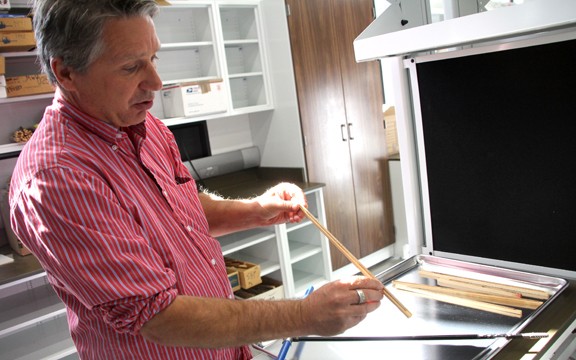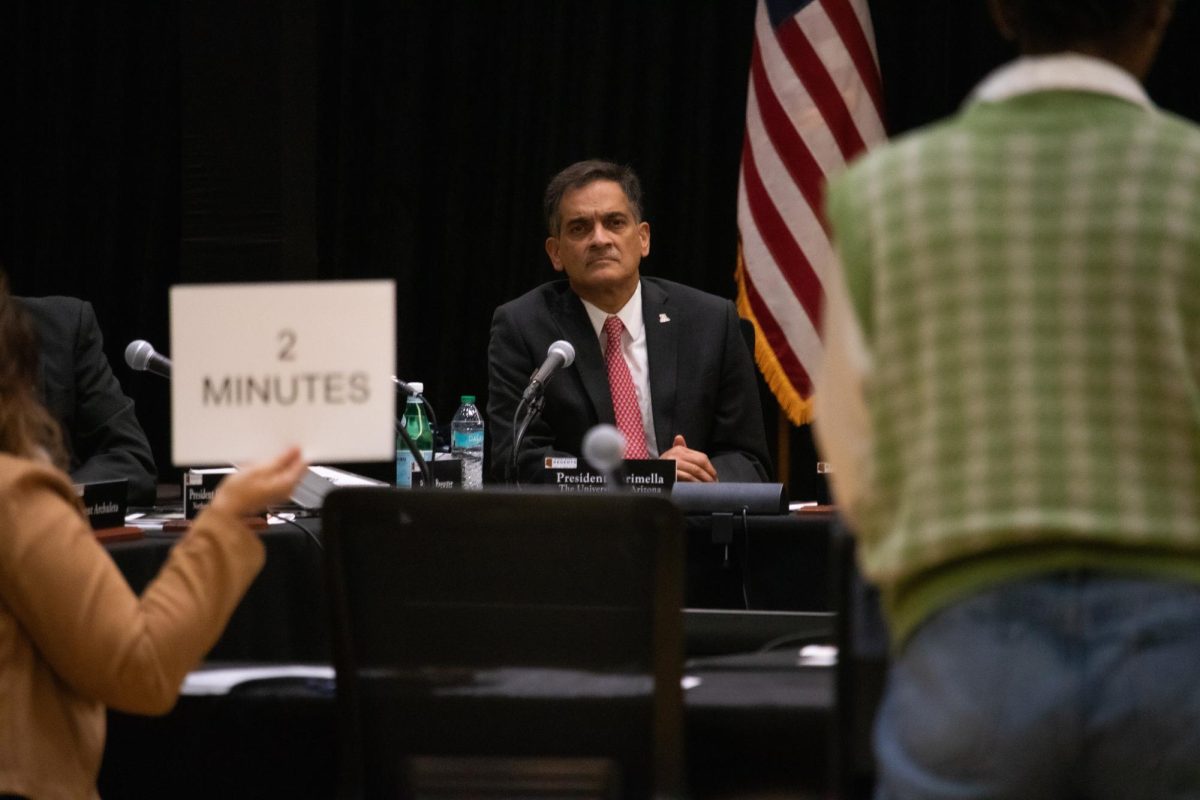After 75 years in temporary space, the Laboratory of Tree-Ring Research is awaiting the final touches on its new location.
The lab inhabited the western part of Arizona Stadium since Andrew Douglass founded the program in 1937. The delay in attaining a more permanent station was finally resolved thanks to a donor who gave $8 million to fund the new building’s construction five years ago.
The new center, located near 6th Street near the Mathematics Building, better accommodates the researchers’ studies of dendrochronology, tree-ring dating. The new building provides more space and gives researchers efficient access to data and tree samples, which creates a better working environment, according to Rex Adams, a retired research specialist.
Furthermore, the laboratory provides a consolidated space for lab work so people don’t have to work in separate rooms all down the Mall, which makes it easier for everyone to work together, according to Christopher Baisan, a research specialist.
“Almost everybody has some kind of window view,” Adams said. “It’s just the fact we have natural light coming in from all four sides that uplifts the spirit.”
Dendrochronology, according to Adams, is the study of trees’ time. The tree-ring research building is the center where researchers study samples of wood remnants from all over the world to create chronological sequences, shedding light on environmental matters and specifically targeting fluctuations in climate. The researchers look at the condition and age of trees to determine climate circumstances at a precise time.
The research building contains around 2 million samples and cross sections of more than 100 species of trees including pine, oak, sequoia, fir and spruce.
The most intriguing piece of the collection is a pith of wood brought to the UA from Wheeler Peak in eastern Nevada. Don Currey, a graduate student from the University of North Carolina, was studying glaciers in Nevada in the 1960’s when he decided that determining the age of the trees growing after the glacier had passed would help him estimate the time at which the glacier existed. The first tree he came to was an old bristlecone pine, which the forest rangers helped him cut down so he could count the rings of the cross section to figure out its age.
After examining the cross section, Currey learned the tree was almost 5,000 years old — the oldest known tree in existance. However, his discovery became extremely controversial because he had cut down and killed the oldest living tree ever encountered to make it. Currey’s bristlecone pine sample was given to the UA by a professor at the University of Texas.
It is still in storage but will be uncovered in the near future to be exhibited among all the other tree samples and cross sections for the public’s entertainment and education, Baisan said.
Although Currey cut down a tree to obtain this sample, the tree-ring laboratory does not cut down living trees for their research, according to Matt Salzer, a UA research associate. Old wood remnants or samples are taken using an increment bore that only causes a small, healable wound in the tree. The sap of the tree contributes to the healing process and the tree is not fatally damaged.
The formal dedications of the laboratory will take place on March 1 and the public dedication will occur the following day.
“It will be the first time we have a real building,” Baisan said. “Douglass was promised one when he first founded the program.”









